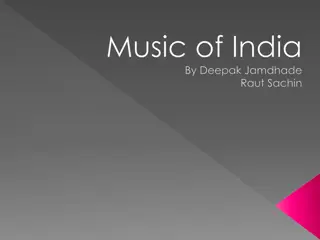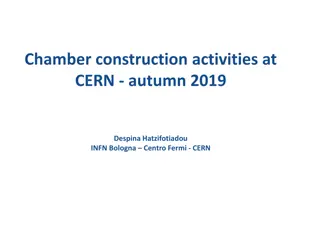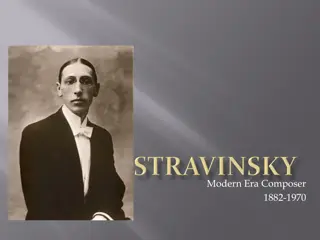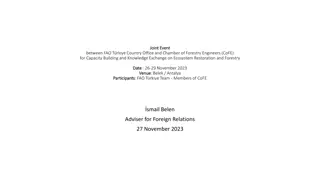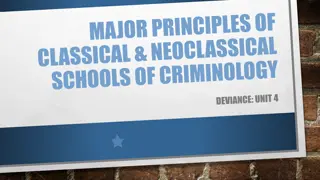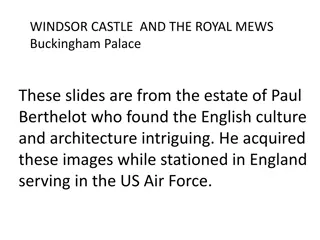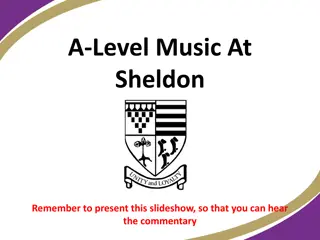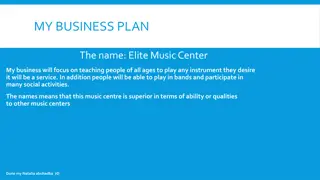Understanding Classical Era Symphony and Chamber Music
In the Classical Era, symphonies emerged as standalone works separate from operas, featuring a typical format of four movements with varying moods and tempos. Chamber music, enjoyed by players and listeners alike, particularly the string quartet, was popular. Haydn, with patronage from the Esterhazys, greatly contributed to the development and standardization of orchestral music, experimenting with symphonies and sonata forms. Instrumentation varied for different ensembles, from small string quartets to large orchestras.
Download Presentation

Please find below an Image/Link to download the presentation.
The content on the website is provided AS IS for your information and personal use only. It may not be sold, licensed, or shared on other websites without obtaining consent from the author. Download presentation by click this link. If you encounter any issues during the download, it is possible that the publisher has removed the file from their server.
E N D
Presentation Transcript
The Classical Era Chapters 7, 9, 10 Symphony Chamber Music Haydn Class Summary
Symphony ca. 1700 Early 1700s 1740s Origin: Opera Sinfonias performed in concert halls without operas (very popular) sinfonias written as separate works NO associated opera 4th mvt added Voila!!! Symphony OPERA 3-mvt overtures called sinfonias
Mvt 1 Typical symphony format MOOD TEMPO FORM KEY Mvt 1 serious fast sonata tonic Mvt 2 calm, expressive slow sonata, th & var, ABA NOT tonic Mvt 3 dance-like or scherzo moderate or fast minuet & trio tonic Mvt 4 lighter fast sonata or sonata-rondo tonic
Chamber Music Small ensembles; 1 player/part No conductor For players enjoyment as much as listeners Filler of leisure time (entertainment!) String quartet = most popular
Haydn patronage w/ Esterhazys large output, much variety 104 symphonies many string quartets, serenades, masses, concertos, sonatas, etc. developed orchestra standardized instrumentation discovered new tone colors thru various combinations of strings, woodwinds, brass developed the symphony (genre) lengthened it experimented with sonata form development procedures
Instrumentationlike a recipe, includes ingredients and quantity String Quartet violin 1 violin 2 viola cello Small Orchestra 2 flute 2 oboe 2 clarinet 2 bassoon 2 horn 2 trumpet 1 timpani 8 violin 1 6 violin 2 4 viola 4 cello 3 contrabass Concert Band 6 flute/piccolo 2 oboe 4 clarinet 1 5 clarinet 2 5 clarinet 3 2 bass clarinet 2 bassoon 4 horn 3 trumpet 1 2 trumpet 2 2 trumpet 3 2 trombone 1 2 trombone 2 2 trombone 3 2 euphonium 4 tuba 1 timpani 4 percussion Large Orchestra 1 piccolo 3 flute 3 oboe 1 english horn 4 clarinet 3 bassoon 1 contrabassoon 4 horn 3 trumpet 3 trombone 1 tuba 1 timpani 2 percussion 18 violin 1 16 violin 2 10 viola 10 cello 8 contrabass 2 harp Brass Quintet trumpet 1 trumpet 2 horn trombone tuba Woodwind Quintet flute oboe clarinet horn bassoon
Class Summary: Symphony--an opera spin-off (explain) Why is chamber music so named? Why might it be said that Haydn and Esterhazy enjoyed a symbiotic relationship? What were the perks for each? What term is used for this IMP 18thC institution? What aspects of Haydn s work at Esterhaza made it possible for him to experiment with orchestra development?







